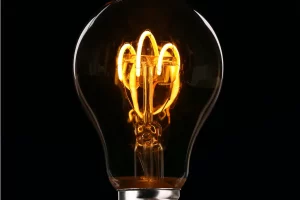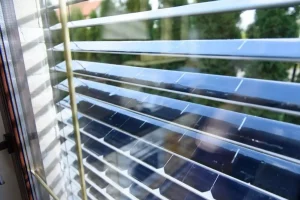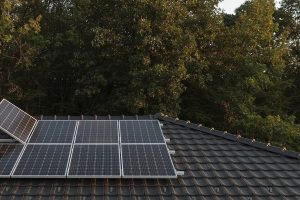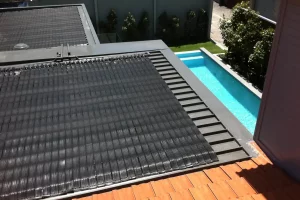As concerns about climate change and energy independence grow, many individuals and communities are exploring off-grid solar power systems. These systems provide a sustainable and autonomous energy solution, allowing users to generate their own electricity without relying on the traditional power grid. This comprehensive guide will explore what off-grid solar power systems are, their benefits, the realistic amount of electricity they can generate, the essential components, and manufacturers that offer all-in-one solutions.

What is an Off-Grid Solar Power System?
An off-grid solar power system, also known as a stand-alone power system (SAPS), is designed to operate independently of the traditional electricity grid. It harnesses energy from the sun through solar panels and converts it into electricity, which is stored in batteries for later use. These systems are particularly beneficial in remote areas where grid access is unavailable or unreliable, providing a self-sufficient energy source.
Benefits of Off-Grid Solar Power Systems
Off-grid solar power systems offer several advantages that make them an attractive option for many users.
Energy Independence
One of the most significant benefits of an off-grid system is energy independence. Users are not reliant on utility companies or vulnerable to power outages and fluctuating electricity prices. This independence ensures a continuous power supply, particularly in areas prone to blackouts or with unreliable grid access.
Environmental Impact
Off-grid solar power systems utilize renewable energy from the sun, significantly reducing greenhouse gas emissions and reliance on fossil fuels. This environmentally friendly approach helps mitigate climate change and reduces the carbon footprint.
Cost Savings
While the initial investment in an off-grid system can be high, long-term savings on electricity bills can be substantial. Users avoid ongoing utility costs, and various incentives, tax credits, and rebates can further reduce the financial burden.
Remote Access
For remote locations without access to the grid, off-grid solar power systems provide a viable and often the only option for electricity. This enables access to modern amenities and improves the quality of life in these areas.
How Much Electricity Can You Realistically Generate?
The amount of electricity an off-grid solar power system can generate depends on several factors, including the size and efficiency of the solar panels, geographic location, and available sunlight. On average, a well-designed off-grid system can generate enough electricity to power a typical household, but this requires careful planning and consideration of energy needs.
Solar Panel Efficiency
Modern solar panels typically have efficiency ratings between 15% and 22%. Higher efficiency panels produce more electricity from the same amount of sunlight, which is crucial for maximizing energy generation in limited space.
Geographic Location
The geographic location significantly impacts the amount of sunlight available for solar energy generation. Regions with high solar irradiance, such as the southwestern United States, can produce more electricity compared to areas with less sunlight.
System Size
The size of the solar panel array and the capacity of the battery storage determine how much electricity can be generated and stored. A typical residential off-grid system might range from 3 kW to 10 kW, depending on energy consumption and available space for solar panels.
Components of Off-Grid Solar Power Systems
An off-grid solar power system consists of several key components, each playing a vital role in generating, storing, and using electricity.
1. Solar Panels
Solar panels capture sunlight and convert it into direct current (DC) electricity. They are the primary source of energy for the system and are typically mounted on rooftops or ground-mounted arrays.
2. Inverter
The inverter converts the DC electricity generated by the solar panels into alternating current (AC) electricity, which is used by most household appliances. Off-grid systems often use hybrid inverters that can manage both solar and battery inputs.
3. Battery Storage
Battery storage is crucial for off-grid systems, allowing excess electricity generated during sunny periods to be stored for use during nights or cloudy days. Modern lithium-ion batteries are popular due to their efficiency, long lifespan, and storage capacity.
4. Charge Controller
The charge controller regulates the voltage and current coming from the solar panels to the battery, preventing overcharging and prolonging battery life. It ensures the system operates efficiently and safely.
5. Backup Generator
A backup generator can provide additional power during periods of low sunlight or high energy demand. It ensures a reliable power supply, especially in areas with less consistent solar availability.
6. Monitoring System
A monitoring system tracks the performance of the off-grid solar power system, providing real-time data on energy production, consumption, and battery status. This helps users optimize energy use and identify any issues promptly.
Manufacturers of All-in-One Off-Grid Solar Power Systems
Several manufacturers offer all-in-one off-grid solar power systems, providing a convenient and integrated solution for users.
Tesla
Tesla’s Powerwall is a well-known all-in-one solution that combines solar panels with a high-capacity lithium-ion battery. The system is designed for seamless integration and can be monitored and controlled via a mobile app.
Goal Zero
Goal Zero specializes in portable and scalable off-grid solar power systems. Their Yeti series combines solar panels, battery storage, and inverters into a compact and modular design, suitable for both residential and mobile applications.
Schneider Electric
Schneider Electric offers comprehensive off-grid solar solutions, including their Conext XW+ series. These systems include solar panels, inverters, charge controllers, and battery storage, providing a reliable and efficient energy solution.
OutBack Power
OutBack Power provides robust off-grid solar power systems designed for harsh environments. Their FLEXpower systems integrate all necessary components into a pre-wired, tested, and assembled system, simplifying installation and use.
Conclusion
Off-grid solar power systems offer a sustainable and independent energy solution for those seeking to reduce their reliance on the traditional power grid. With benefits such as energy independence, environmental impact, and long-term cost savings, these systems are an attractive option for many. Understanding the components and how much electricity can be generated is crucial for designing an effective system. With several manufacturers offering all-in-one solutions, adopting off-grid solar power has never been more accessible. Embracing this technology can lead to a more sustainable and self-sufficient future.



